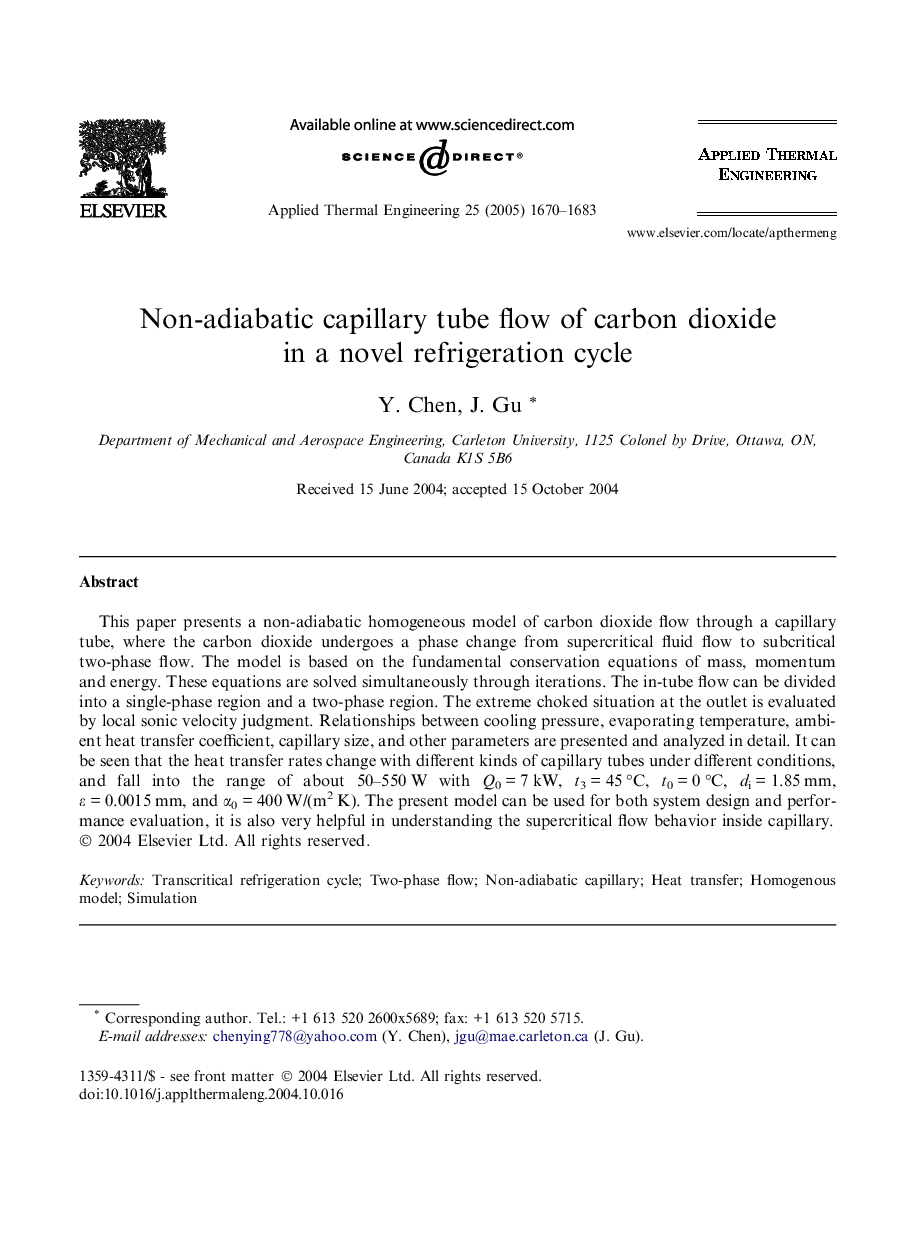| Article ID | Journal | Published Year | Pages | File Type |
|---|---|---|---|---|
| 9690301 | Applied Thermal Engineering | 2005 | 14 Pages |
Abstract
This paper presents a non-adiabatic homogeneous model of carbon dioxide flow through a capillary tube, where the carbon dioxide undergoes a phase change from supercritical fluid flow to subcritical two-phase flow. The model is based on the fundamental conservation equations of mass, momentum and energy. These equations are solved simultaneously through iterations. The in-tube flow can be divided into a single-phase region and a two-phase region. The extreme choked situation at the outlet is evaluated by local sonic velocity judgment. Relationships between cooling pressure, evaporating temperature, ambient heat transfer coefficient, capillary size, and other parameters are presented and analyzed in detail. It can be seen that the heat transfer rates change with different kinds of capillary tubes under different conditions, and fall into the range of about 50-550 W with Q0 = 7 kW, t3 = 45 °C, t0 = 0 °C, di = 1.85 mm, ε = 0.0015 mm, and α0 = 400 W/(m2 K). The present model can be used for both system design and performance evaluation, it is also very helpful in understanding the supercritical flow behavior inside capillary.
Related Topics
Physical Sciences and Engineering
Chemical Engineering
Fluid Flow and Transfer Processes
Authors
Y. Chen, J. Gu,
